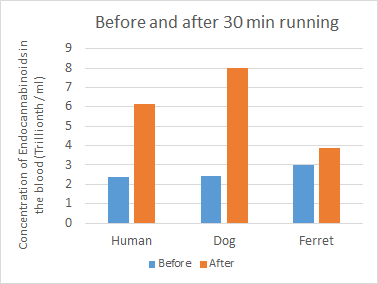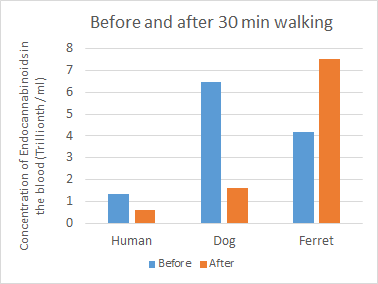Evolution of endurance running
Many features of our body and our physiology suggest that they are not merely adaptations to upright walking but to endurance and long-distance running.
Thus, anthropologists suspect that Homo erectus was able to secure and improve his food intake by endurance running. After all, they had no sharp fangs, strong teeth, or sharp claws, to compete with the savanna’s specialized predators. Nor did early H. erectus have sophisticated tools such as spears or bow and arrow to kill prey animals from a safe distance.

Teaching materials: Evolution of endurance running
Reading texts, videos and causal maps on the evolution of physical and cognitive traits for endurance running over the course of human evolution
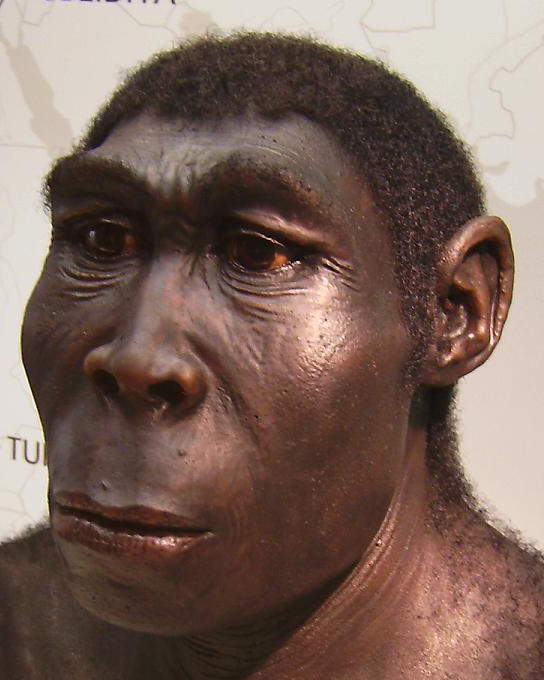
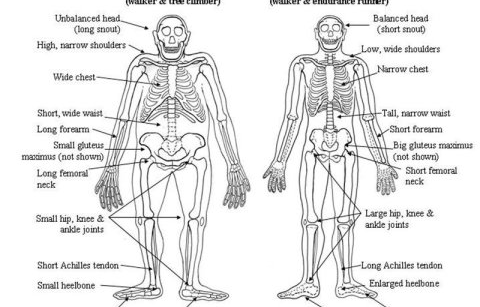
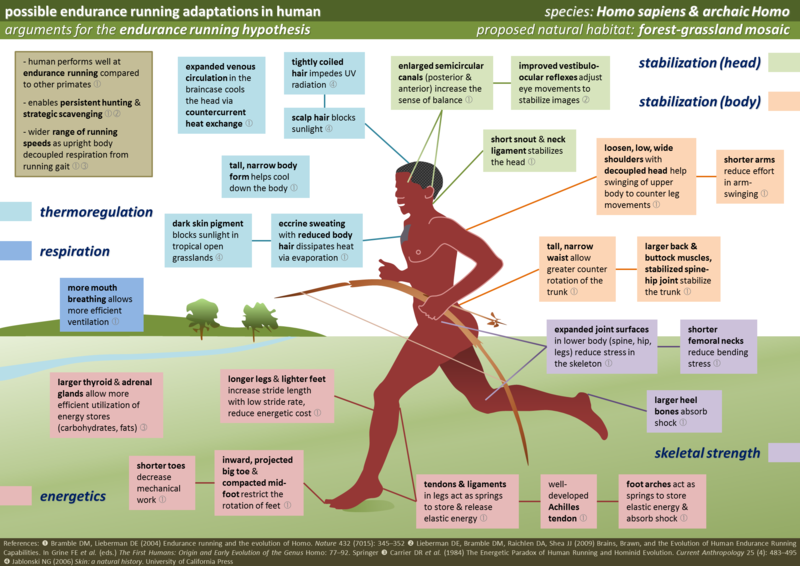
Image source: W. Schnaubelt & N. Kieser (Atelier WILD LIFE ART), Foto – illyundfreya, CC BY-SA 3.0
Questions about the videos:
- What features of our body and physiology seem to be adjustments to endurance running?
- Why could these adaptations to endurance and long-distance running have come about in the course of our evolutionary history?
Endurance running and brain activity
But not only features of our skeleton and our musculature are adaptations to endurance running. Also features of the nervous system and brain activity have an effect on our endurance, and were selected during our evolutionary history. Thus, species such as humans and dogs which are adapted to endurance running have an increased secretion of neurotransmitters and hormones during and after a long-distance run, such as dopamine, serotonin, endocannabinoids and endorphin.
The combined activity of these neurotransmitters is among others responsible for the reward system in the brain. It ensures that we are motivated to achieve goals, try new things, explore new areas, and solve new problems. If successful, then we feel a sense of happiness or a “kick” which re-activates the reward system and motivates us for future efforts. Dopamine is also involved in thermoregulation and coordination of movements. Serotonin, endocannabinoids and the hormone endorphin increase mood and reduce pain sensitivity. All these effects increase the endurance and motivation for running.
Causal map for endurance running
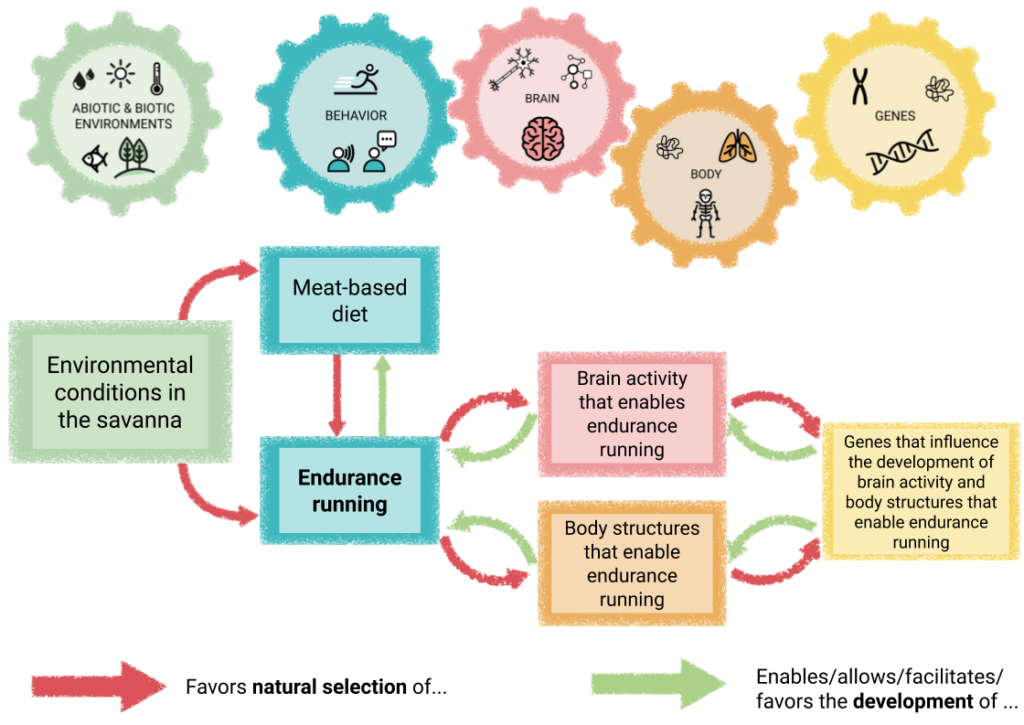
An increasing dependence of ancestral hominins on a meat-based diet (as a response to the environmental conditions of the savanna) created a selective advantage for those that engaged in endurance running (to escape danger and out-run prey). Among those hominins who used running as a behavioral strategy, those with bodies and brains better enabling this activity would have had still further fitness advantage (surviving and reproducing better than others). Among those best developed for running, those whose differences were due to genetic variations would have passed these genes on to their offspring, who were also more likely to develop and engage the capacity for endurance running as part of their ecological niche.
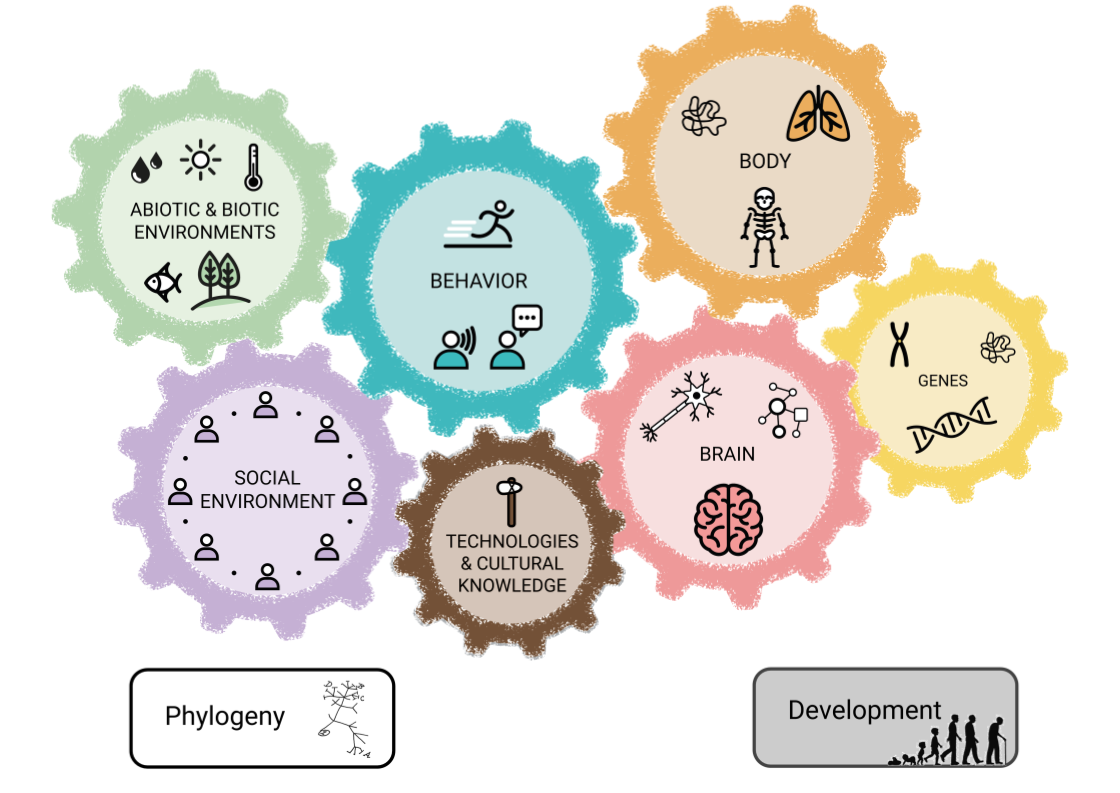
Causal maps on the evolution of human traits
All causal maps on human evolution in one Google slide file
Extended reflection questions:
What causes other than genes could also have an influence on the development of bodies and brains that are well equiped to engage in endurance running?
- Diet and social environments could be an additional source of variation for this trait.
If dietary and social environments produce differences in endurance running, would these traits be heritable? Why or why not?
- It depends on how we define “hereditability” or “inheritance”. Some biologists understand heritability only as “genetic inheritance”, i. the transfer of genetic material to offspring. Of course, then, the social environment would not be hereditary because it is not or only to a small extent influenced by genes. However, other biologists also understand inheritance more generally, as any things that can be passed on to offspring or others in the group, or things that persist over time for long enough to influence organisms in the future. In addition to genes, these things can then also play a significant role in the development of certain traits. These biologists would say that a particular diet can be heritable if it is also passed on through social learning, or if offspring are born into an environment where certain foods are abundant. In addition, the social environment can be said to be heritable, because descendants of socially living organisms are born into this pre-existing social environment.
see also: Cultural Evolution
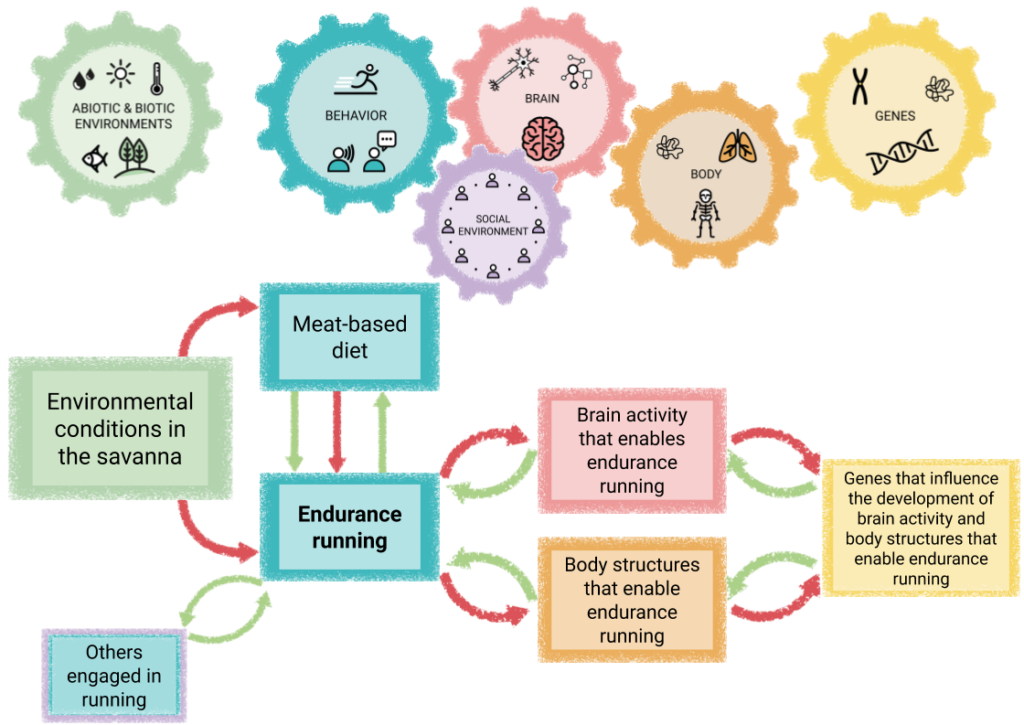
Possible extensions of the causal map to also represent the role of the social environment and diet in the development of the trait “endurance running”.
References
- Bramble, D. M., & Lieberman, D. E. (2004). Endurance running and the evolution of Homo. Nature, 432(7015), 345–352. https://doi.org/10.1038/nature03052
- Raichlen, D. A., Foster, A. D., Gerdeman, G. L., Seillier, A., & Giuffrida, A. (2012). Wired to run: exercise-induced endocannabinoid signaling in humans and cursorial mammals with implications for the “runner’s high.” Journal of Experimental Biology, 215(8), 1331–1336. http://doi.org/10.1242/jeb.063677
- Schulkin, J. (2016). Evolutionary Basis of Human Running and Its Impact on Neural Function. Frontiers in Systems Neuroscience, 10(July), 1–10. https://doi.org/10.3389/fnsys.2016.00059
Waters, R.P., K.J.Renner, R.B.Pringle, Cliff H.Summers, S.L.Britton, L.G.Koch, & J.G.Swallow (2008): Selection for aerobic capacity affects corticosterone, monoamines and wheel-running activity. Physiology & Behavior, 93 (4–5), 1044-1054. https://doi.org/10.1016/j.physbeh.2008.01.013


